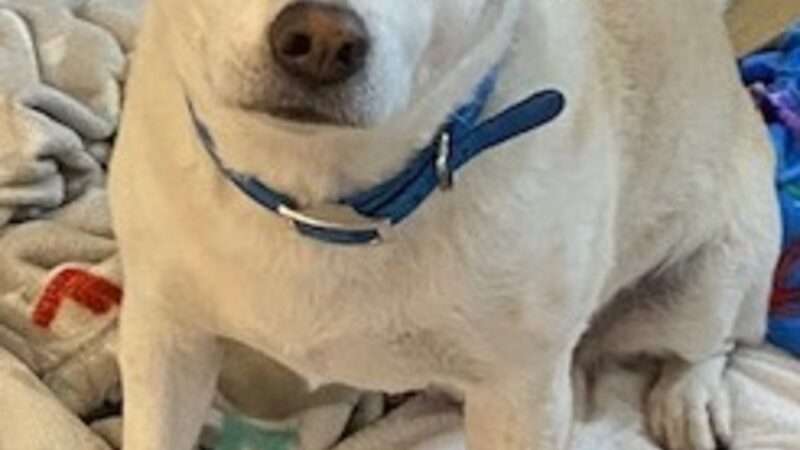

Roxy is a “specially trained bed bug sniffing dog,” owned by M & M Environmental—a bed bug exterminator—and kept for four years at the home of M & M employee Barry Myrick; Myrick and Roxy “work[ed] together visiting homes and business to determine whether bed bugs were present.” Myrick had agreed at the outset that he “must return Roxy to M&M immediately upon the request of the Employer or upon the conclusion of my employment.” The company paid for Roxy’s food and medical care.
In March 2020, Myrick was either laid off or quit (there’s a dispute about), but never returned Roxy. M & M sued to get Roxy back so she could “resume her bed bug sniffing duties” (M & M Environmental v. Myrick), but Monday New York trial court Judge Paul A. Goetz said no:
Traditionally under New York law, dogs and other companion animals such as Roxy have been treated as personal property. However, in light of the many protections afforded animals under the law, a growing body of case law has started to recognize that dogs fall within a special category of property that is treated differently from other types of personal inanimate property (Ferger v Warwick Animal Shelter, 59 AD3d 68 [2nd Dept 2008] [observing that trusts may now be created for pets upon the death or incapacitation of their human companions and pets may now be included in orders of protection issued by Family Court]). The question then arises what standard should be applied when determining custody and ownership of this special category of personal property.
In Travis v Murray, the court, in the context of a divorce action, was called upon to decide with whom Joey, a miniature dachshund, should live. After a thoughtful and extensive survey of the law concerning pets, the Travis Court determined that the most appropriate standard to apply when deciding with whom a pet should reside is the one found in the First Department case, Raymond v Lachmann (264 AD2d 340, 341 [1st Dept 1999]), the “best for all concerned” standard.
{Other courts have cited Raymond for the proposition that the appropriate standard is a “best interest of the animal” standard. (Feger, 59 AD3d at 72 [deciding appropriateness of a protective order to prevent disclosure of the identities of the donor and adoptive owner of a cat sought by plaintiff]; LeConte v Lee, 35 Misc. 3d 286, 288 [Civ Ct, NY Co 2011] [deciding replevin action between former paramours]).}
The Travis court detailed the factors to consider when applying the “best for all concerned” standard and indicated that it would hold a hearing at which the parties would be given an opportunity to prove not only why she will benefit from having Joey in her life but why Joey has a better chance of living, prospering, loving and being loved in the care of one spouse as opposed to the other. The factors the Court set out include who bore the major responsibility for meeting Joey’s needs (i.e. feeding, walking, grooming and taking him to the veterinarian) and who spent more time with Joey on a regular basis. Outside the matrimonial action context, trial courts have also applied the best for all concerned standard when determining ownership and custody of pets (Mitchell v Snider, 51 Misc 3d 1229 [Civ Ct NY Co 2016] [replevin action between former paramours]; Ramseur v Askins, 44 Misc 3d 1209 [A] [Civ Ct Bx Co 2014] [replevin action between nephew and aunt]; see also Hennet v Allan, 543 Misc 3d 542 [SC Albany Co 2014] [citing Travis in determining that the dispute between two former paramours required a hearing as to which party “has the most genuine right of possession”])….
[T]he question is not whether [M & M] holds “title” to her but rather whether [M & M] or [Myrick] has the superior right to custody of Roxy taking into account that she falls within a “special category of property.” When resolving competing claims of who owns a dog, application of the best for all concerned standard is appropriate because it takes into account the special nature of dogs—their needs and well-being—as well as the competing claims by the parties.
Applying the best for all concerned standard and the straightforward factors set out by the court in Travis, on this record, [M & M] has not established a likelihood of success on the merits to warrant ordering Roxy’s return to [M & M]. [M & M] does not submit evidence that it endeavored to meet any of Roxy’s needs such as feeding, walking and grooming her. [M & M] merely reimbursed [Myrick] for food and veterinarian care; [Myrick] has been the party responsible for ensuring that Roxy has been properly feed and kept in good health.
Footing the bill for food and veterinarian care, without more, is insufficient to establish that [M & M] was meeting Roxy’s needs. Nor does [M & M] allege that any of its other employees or [owners] spent any time with Roxy on a regular basis and there is no dispute that she has lived with [Myrick] for the past four years.
Prime evidence on this record that Roxy is well cared for by [Myrick] was not submitted by [Myrick] but rather by [M & M]. The YouTube video [M & M] linked to in its papers demonstrates that [Myrick] and Roxy have developed a deep mutual bond between them over the last four years. Removing Roxy from the home where she has grown and thrived, as evidenced in the YouTube video, for the past four years would likely cause her a great deal of distress and would not be in her or [Myrick]’s best interest.
[M & M]’s expense in acquiring Roxy and any compensable quantifiable business loses incurred as result of her not being deployed on [M & M]’s behalf may be awarded at a future date and do not outweigh the harm it will likely cause to Roxy and [Myrick] by ordering Roxy’s return to [M & M]….
I can see the arguments for the law recognizing the interests of dogs and similar animals, including their bonds with people they’ve lived with; perhaps this New York approach is indeed better than the traditional approach, where the owners have control over where and with whom the dog lives and works.
But I wanted to flag this, because it does seem like a serious departure from the traditional approach—and one that would apply to a wide range of working animals (at least as long as they are working for a company, rather than just for a sole proprietor). After all, in most companies that use such animals, the animal will be taken care of by employees and not the company owners; and often the animal will be taken care of by one particular employee more than by others. The sort of human-animal bonding that the judge found here will likely happen in many such cases; and, if this decision is followed, companies will no longer be able to have any confidence that, when the employee quits, they’ll be able to continue using the animal. Maybe that’s fine, but it strikes me as worth thinking about.
from Latest – Reason.com https://ift.tt/3m6gJjg
via IFTTT